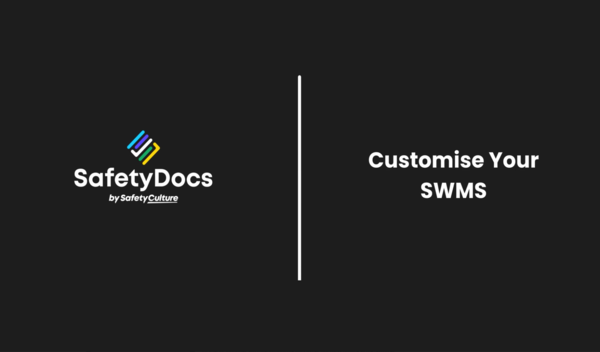Timber Doors-Windows Installation Safe Work Method Statement
- Instant Document Delivery via Email.
- Add to your existing management system.
- Can assist in ensuring workers are adequately trained.
- Customisation instructions provided.
- Microsoft Word Format (Fully editable).
- Only pay once (no subscriptions required).
Timber Doors-Windows Installation Safe Work Method Statement (SWMS)
This Timber Doors - Windows Installation Safe Work Method Statement (SWMS) covers hazards and controls associated with the handling, movement on site, and installation of timber windows and doors.
Job Steps Covered in Timber Doors-Windows Installation SWMS
- Training on Health Effects associated with Respirable Crystalline Silica Dust (RCS): Outlines the importance of understanding the health risks of RCS and the use of protective measures.
- Check Weather Conditions & Prepare: Addresses the preparation and precautions needed for outdoor work, including weather considerations.
- Arrival On-site & Assess On-site Conditions: Focuses on initial site assessment for safety and planning.
- Work Area Set-up: Details the establishment of safe work zones and exclusion areas.
- Environment: Covers the environmental considerations and controls for waste, noise, and air quality.
- Housekeeping: Emphasises the importance of maintaining a clean and safe work area to prevent accidents.
- Manual Tasks: Discusses the handling of materials and equipment to prevent musculoskeletal injuries.
- Materials Delivery: Outlines the safe delivery and handling of materials on-site.
- Working with Powered & Non-powered Tools: Provides guidelines for the safe use of tools to prevent injuries.
- Hazardous Substance/Chemical Use: Details the precautions for handling hazardous substances.
- Working at Height on Ladders, Trestles, Mobile & Fixed Scaffold: Covers the safety measures for working at elevated levels to prevent falls.
- Cutting & Joining Timber: Addresses the safe practices for cutting and joining timber to avoid injuries.
- Positioning, Levelling & Fixing Frames: Focuses on the safe handling and installation of frames.
- On Completion: Outlines the steps for safely concluding work, including dismantling scaffolds and cleaning up.
- Emergency Response: Provides guidelines for responding to emergencies on-site.
Each purchase of our SWMS comes with a complimentary copy of the Legislation & Codes of Practice Reference List, valued at $19.95. This valuable resource provides an up-to-date overview of relevant laws and standards, further supporting your compliance efforts.
Key Features of the SWMS
- Comprehensive Risk Management: Includes detailed control measures for managing identified hazards effectively.
- Regulatory Compliance: Adherence to Australian health and safety legislation.
- Practical Safety Instructions: Offers clear, actionable safety instructions for all aspects of timber doors and windows installation.
- Emergency Response: Outlines an emergency response to enhance workplace safety.
Who is it Suitable For?
This SWMS is essential for businesses and workers involved in the construction industry, specifically those handling the installation of timber doors and windows. It is suitable for:
- Construction Managers
- Site Supervisors
- Installation Teams
- Safety Officers
Get your copy today and take a proactive step toward enhanced workplace safety.
- Instant Document Delivery via Email.
- Add to your existing management system.
- Can assist in ensuring workers are adequately trained.
- Customisation instructions provided.
- Microsoft Word Format (Fully editable).
- Only pay once (no subscriptions required).
Timber Doors-Windows Installation Safe Work Method Statement (SWMS)
This Timber Doors - Windows Installation Safe Work Method Statement (SWMS) covers hazards and controls associated with the handling, movement on site, and installation of timber windows and doors.
Job Steps Covered in Timber Doors-Windows Installation SWMS
- Training on Health Effects associated with Respirable Crystalline Silica Dust (RCS): Outlines the importance of understanding the health risks of RCS and the use of protective measures.
- Check Weather Conditions & Prepare: Addresses the preparation and precautions needed for outdoor work, including weather considerations.
- Arrival On-site & Assess On-site Conditions: Focuses on initial site assessment for safety and planning.
- Work Area Set-up: Details the establishment of safe work zones and exclusion areas.
- Environment: Covers the environmental considerations and controls for waste, noise, and air quality.
- Housekeeping: Emphasises the importance of maintaining a clean and safe work area to prevent accidents.
- Manual Tasks: Discusses the handling of materials and equipment to prevent musculoskeletal injuries.
- Materials Delivery: Outlines the safe delivery and handling of materials on-site.
- Working with Powered & Non-powered Tools: Provides guidelines for the safe use of tools to prevent injuries.
- Hazardous Substance/Chemical Use: Details the precautions for handling hazardous substances.
- Working at Height on Ladders, Trestles, Mobile & Fixed Scaffold: Covers the safety measures for working at elevated levels to prevent falls.
- Cutting & Joining Timber: Addresses the safe practices for cutting and joining timber to avoid injuries.
- Positioning, Levelling & Fixing Frames: Focuses on the safe handling and installation of frames.
- On Completion: Outlines the steps for safely concluding work, including dismantling scaffolds and cleaning up.
- Emergency Response: Provides guidelines for responding to emergencies on-site.
Each purchase of our SWMS comes with a complimentary copy of the Legislation & Codes of Practice Reference List, valued at $19.95. This valuable resource provides an up-to-date overview of relevant laws and standards, further supporting your compliance efforts.
Key Features of the SWMS
- Comprehensive Risk Management: Includes detailed control measures for managing identified hazards effectively.
- Regulatory Compliance: Adherence to Australian health and safety legislation.
- Practical Safety Instructions: Offers clear, actionable safety instructions for all aspects of timber doors and windows installation.
- Emergency Response: Outlines an emergency response to enhance workplace safety.
Who is it Suitable For?
This SWMS is essential for businesses and workers involved in the construction industry, specifically those handling the installation of timber doors and windows. It is suitable for:
- Construction Managers
- Site Supervisors
- Installation Teams
- Safety Officers
Get your copy today and take a proactive step toward enhanced workplace safety.


